Asetek Forte Simracing Pedals – Review
Shortly after the release of the Invicta pedals, Asetek followed the simracing community’s request for a cheaper Loadcell counterpart and launched a corresponding model on the market with the Forte pedals. In this review, we will take a closer look at the question if the pedals for 500€ can live up to the high expectations of the Danish company.

Order and shipping
Asetek’s Forte pedals can be purchased from the manufacturer’s own online store as well as from various distributors. The following prices are announced:
- Forte Sim Racing Pedals Brake and Throttle: 499€
- Invicta Clutch System: 249€
- Invicta Pedal Face Plates (2x) 39.99€
- Invicta Pedal Face Plates (3x) 59.99€
- Firm Throttle Spring: 10€
5% Asetek Gutscheincode / Coupon code: simracingpc
Note in advance and similarities with Invicta pedals
The pedals featured in this review share the basis with the Invicta pedals from Asetek (link to detailed review), except for the construction of the brake pedal. This is unusual in that the materials and workmanship are of a higher quality than you would otherwise expect from a loadcell set around 500€. For detailed information on mounting on the sim rig, info on the throttle, compatibility and DIY mods is therefore worth a look at the said review. The aspects of the pedals mentioned will not be revisited here.
Dimensions and weight
The pedals are very compact with a size of 457 mm x 212 mm x 256 mm at a weight of only about three kilos and easily find a place even in the narrowest rigs. Adding the optional clutch (weight: ~1.6 kilos) with dimensions of 406 mm x 115 mm x 271 mm does not change this at all.
Scope of delivery
The scope of delivery is, as you can almost say by now, Asetek-typically very extensive, includes various mounting materials and through included elastomers in different hardnesses also the possibility of customizing the pedals.
- Forte™ Brake & Throttle pedal combo
- Manual
- Safety brief
- Warranty statement
- Asetek SimSports™ sticker sheet
- USB Type-A to USB Type-C cable (Two (2) meters)
- USB Type-C to USB Type-C cable (Two (2) meters)
- M6x5 Set screw (x2)
- M6x20 Bolt (x4)
- M6 slot nut (x4)
- Washer (x4)
- M6 Hex nut (x4)
- Allen Key, 3mm
- Allen key, 5mm
- Elastomer
- Yellow or White (w/ text), Soft, Extra
- Orange or Green (w/ text), Medium, Preinstalled
- Red or Yellow (w/ text), Hard, Extra
- Throttle Spring
- Hard, Preinstal
- Soft, Extra
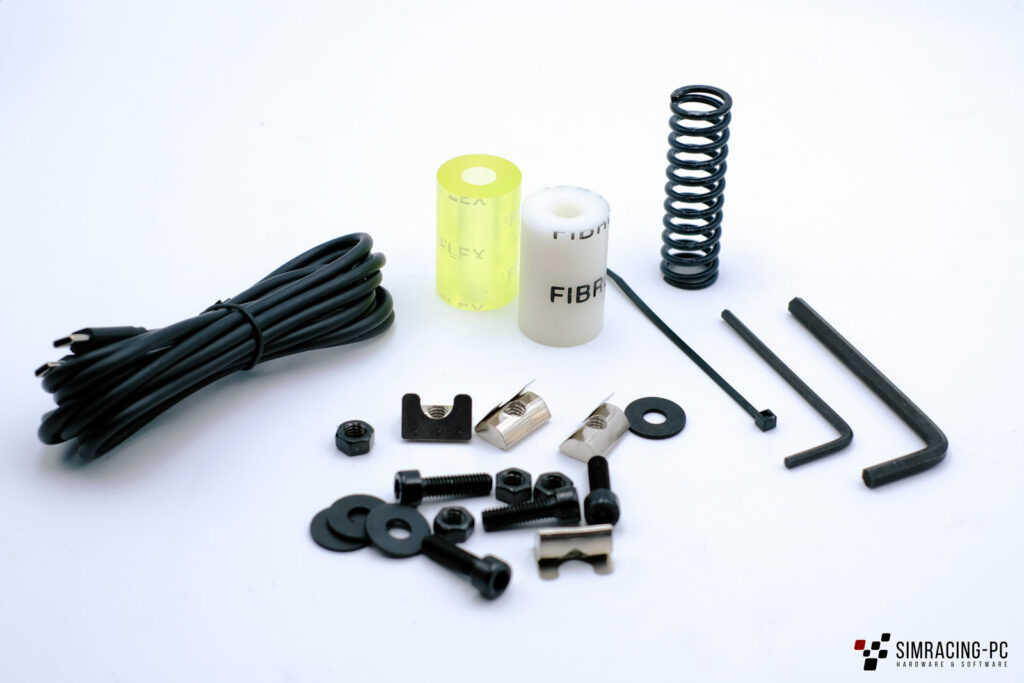
Pedal plates
A point of criticism in the review of the Invicta pedals were the very sharp-edged pedal plates, which were not really designed for use without shoes. Here you get in return very good, both with and without shoes, usable pedals. If necessary, you can then exchange the all-aluminum Forte Pedal Face Plates against the Invicta Pedal Face Plates (available for 39.99€).


Brake system / Loadcell
Asetek has given the Forte pedals a two-stage construction, with the help of which it should succeed in recreating the braking feel of a race car. The M.L.C.P.C (Mechanical Load Cell Powered Cylinder) called system tries to achieve this with a combination of a replaceable elastomer and a hard end stop damped by a rubber ring.
2-Stage-System
A hard brake pedal is faster because you can brake later, and it is required to properly trail brake and use your muscle memory to do so, as explained later. You can consider a race car braking system as 2 stages:
The “soft stage”: When you apply pressure on the pedal, it will move 10-20 mm (measured on the pedal plate), while you build up pressure, while the caliper pistons are traveling to and pushing the brake pads against the brake disc, and to compensate for the small amount of play in all the mechanical parts on the pedal system that is required for them not to seize up.
The “hard stage”: When hydraulic pressure is built up, the brake pads are squeezing the discs hard and all mechanical play is compensated. In this stage, your foot is basically “pressing against a wall”, because now your muscles are pressing directly against the hydraulic forces (the brake fluid). Since the fluid cannot be compressed, you will feel the pedal is hard. When a race car driver complains about a “long” or a “soft” pedal, it is typically because there is air in the system, and since air CAN be compressed, the pedal will feel soft and long. The mechanics then bleed the brakes for air, meaning there is only fluid left in the system, and the pedal is once again hard after passing the “soft stage”.
https://www.asetek.com/simsports/product/forte-pedals-brake-and-throttle/
The first stage of the brake pedal is achieved by compressing the installed elastomer. The elastomer is included in the scope of delivery in three degrees of hardness and ensures a travel of 15 to 25 millimeters (measured on the brake pedal, depending on the settings made) before the second stage is reached.
A note on this: If you do not have the possibility to mount the pedals firmly (for example on a Simrig), it is difficult or even impossible to build up enough brake pressure to reach the second stage. The desired effect can then not be realized.
The second stage is realized by a hard end stop, where the travel of the brake pedal is physically limited by a stop provided with a rubber ring. From this point on, the pedal can only be moved marginally. In terms of output, the second stage with the default settings thus only accounts for a few percent if you do not manually adjust the pedal curves accordingly. In the subjective impression, a somewhat larger share of the second stage of 20-35% leads to a better dosing of the brake pedal, similar to the Invicta pedals. If you want to make the corresponding settings, this is possible via the software since the latest update.
Functioning of the Loadcell
Instead of redirecting the pedal’s force directly to the load cell, Asetek chooses the way around via a spring (see photos). The typical “Loadcell feel” is thus achieved somewhat unorthodoxly here and you can get by with a cheaper Loadcell, since it can be designed for significantly less load. Asetek promises that the high resolution of the Loadcell is more than sufficient for the chosen setup.
In the actual test, this is true and the feel of the Forte pedals (in the first stage) is equivalent to the feel of pedals with direct power transfer to the loadcell.
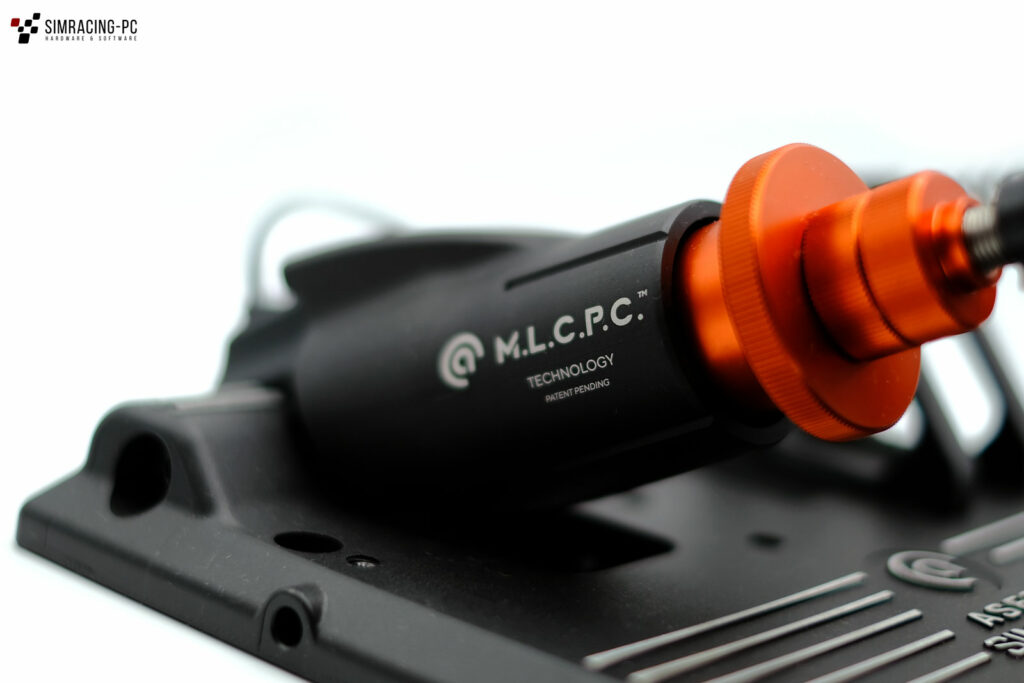

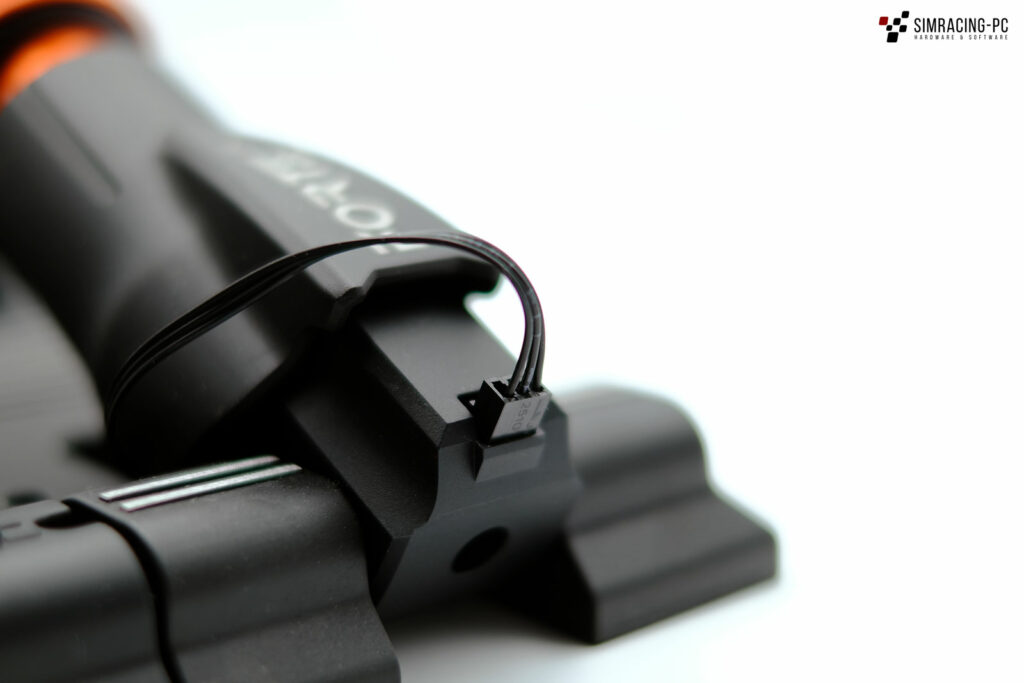
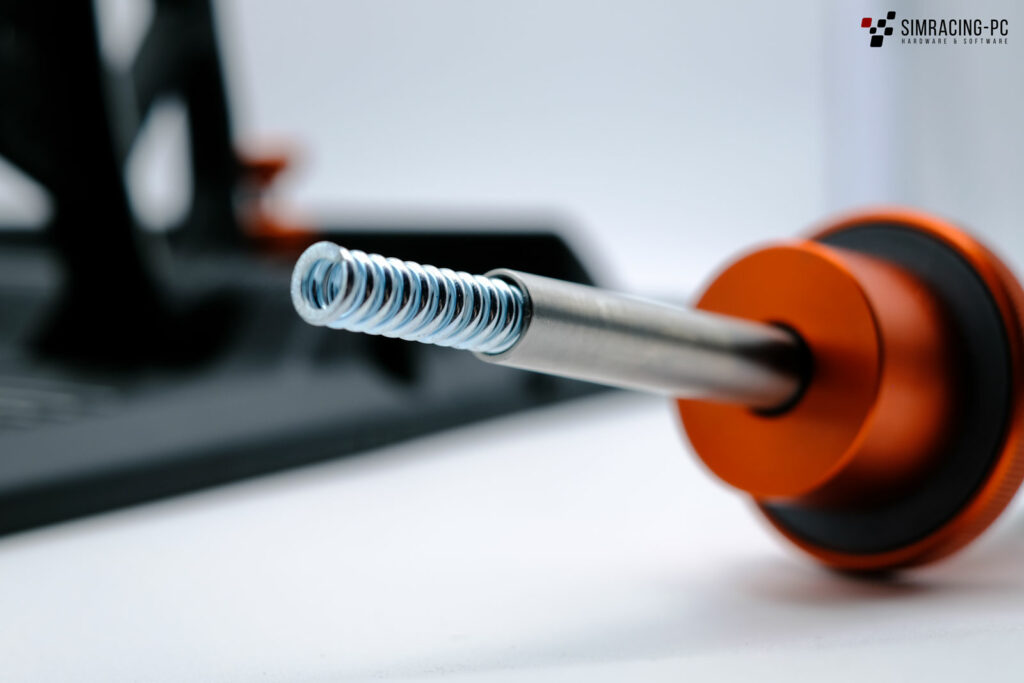

Software
As already mentioned, the software offers a mixed impression. The basic functions are very well implemented and the software appears very tidy and beginner-friendly. All settings can be reached in a few mouse clicks and are easy to use.
But if you want to adjust the mentioned pedal curve, you have to use the profile function and edit the file manually in a text editor, so that you can edit points of the curve away from the 20% steps that can be changed directly in the software. However, Asetek has already confirmed that it is working on a solution to make this step more convenient. Figure 4 shows possible adjustments to the brake pedal curve.
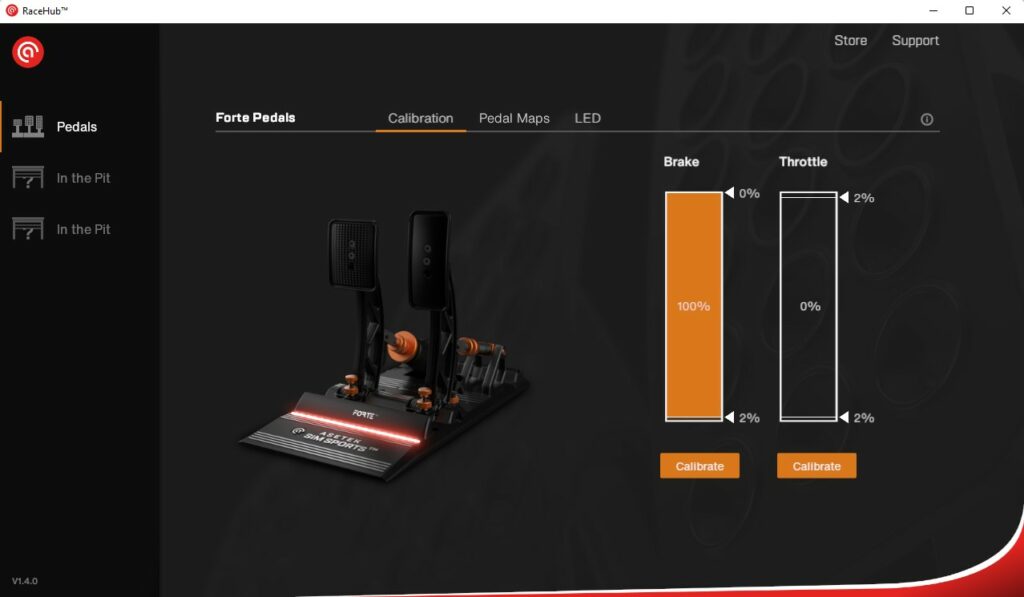
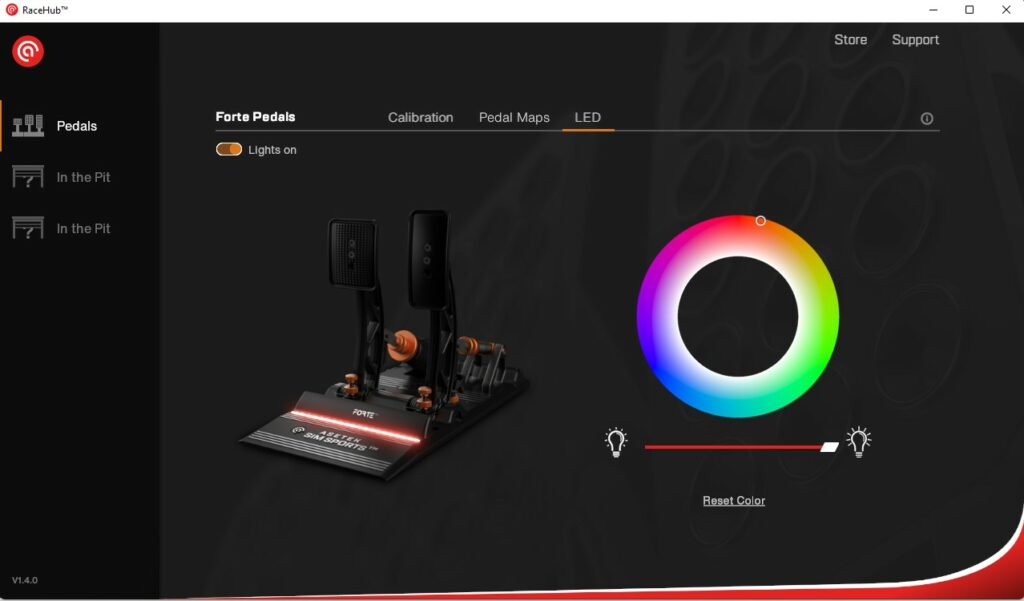

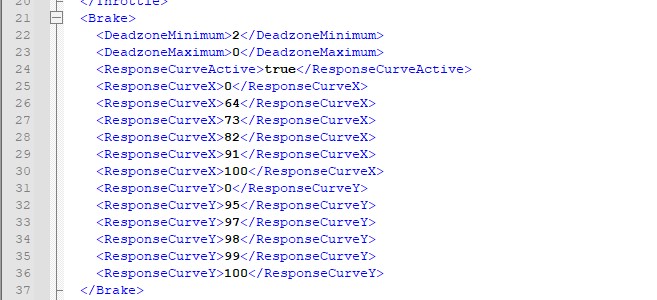
Conclusion
Asetek has created a very solid cheaper alternative with the Forte pedals to the company’s own Invicta pedals. Compared to other manufacturers, you will find a relatively unconventional construction of the brake pedal, which can still use some software fine tuning here and there. However, an good braking feel can be achieved, which enabled very good lap times in the test even in direct comparison to the Invicta pedals.
The pedal set also offers an excellent scope of delivery and an extremely high-quality construction of almost all components, which is already known from the Invicta pedals. The price seems therefore comparatively high, but is relativized by the included baseplate, which you often have to buy additionally at other manufacturers. Compared to the price of 499€ for the pedals, the separately available clutch is a bit too expensive at 249€.
Overall, the pedals from Asetek are a clear recommendation in the range up to 500 € for a 2-pedal set including baseplate.

Pros
- Plug & Play …
- Good software …
- Settings can be made almost completely without tools
- Scope of delivery
- Materials and processing
- (RGB)
Cons
- … at the cost of restricted positioning of the pedals
- … except for the implementation of the pedal curves
- (loud end stop of the throttle)
5% Asetek Gutscheincode / Coupon code: simracingpc











